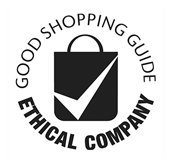Period Tracker Apps: When Technology Met Menstruation
At Mooncup we’ve always been fascinated by periods. In the last few years, however, there has been an outpouring of interest from all quarters in what our periods can tell us (and perhaps more worryingly, tell others – more on that later). From the best time to conceive to whether you’re likely to feel bloated at your brother’s wedding next month, the latest period tracker apps are tapping into the wealth of information we can glean not just from the time of the month, but throughout our cycle.
And in a way, it’s hardly surprising. As modern woman is likely to have almost 300 more menstrual cycles in her lifetime than her pre-agricultural society counterpart all that extra flow has given us a lot more to mull over.
The history of period tracker apps
When the health tracking app, Apple HealthKit launched in 2014 without the functionality to track or record periods there was a sharp and audible intake of breath from at least half of the general public: how was it that such a central part of women’s health had been left out of this supposedly comprehensive health monitoring service?
After all, period tracking and period calendars are nothing new. In the early part of the twentieth century, when the infamous rhythm method was popular, a proliferation of graphs, wheels, slide rules and other analogue devices were created by engineers and doctors in an effort to make conception more controllable.
But we’ve come a long way since the 1930s’ tech of Gilbert Tilmore’s cardboard Rythmeter. Since 2014, there’s been an explosion in the market and currently 100 million women worldwide use dedicated period tracking apps for health, self awareness, fertility insights and pregnancy planning.
These apps have their fans and their critics but their inclusion in an already crowded tech marketplace points to a rise in the use of data to help us understand ourselves better and improve our lives – the so-called Quantified Self movement. You can now find smart apps and devices to track anything from fitness to how your baby is developing and the current trend suggests the more we track, the safer we feel.
Proponents of period apps say they are chipping away at the prejudices and misinformation that prevent women talking and thinking about their menstrual cycle. But while these apps are everywhere now, it hasn’t been an easy journey. Female tech entrepreneurs still face obstacles in getting the support and funding their male counterparts do, with just 10% of global venture-round funding going to companies founded by women. Clue Period Tracker, for example, faced huge amounts of initial resistance from male investors. When it comes to anything related to menstruation products or tech that focuses on women’s health, there is still a very definite social taboo in operation, says Clue founder, Ida Tins.
Data & privacy concerns about smart period technology
As with much of the new smart technology, period trackers have stirred up concerns about privacy and the use of personal data. The original Glow app, for example, was found to be vulnerable to hackers who might want to get hold of its users’ data. The app has now been updated and they have sealed the loophole but often users, especially younger ones, don’t read the privacy policy and this can differ hugely from app to app.
The Wall Street Journal recently reported that period app, Flo had shared its users’ personal data, including period dates and pregnancy plans, with Facebook and other third parties, while Clue’s registered users agree to let Clue use the anonymised information on their cycle to improve the app and to contribute to academic and clinical research. However, the company does state that they won’t sell data to third parties.
According to The Washington Post, some US employers were incentivising their employees to use versions of the Ovia fertility app that give HR staff access to ‘intimate data’ women input about their cycle. The company say they are committed to reducing premature birth and maternal death but their critics warn that this access could be detrimental to a woman’s career, allowing those with the information to anticipate when she wants to start a family and to increase insurance. The CEO of Glow too has hinted that their users’ data could potentially be used for insurance assessments.
In an investigation by the Guardian into period tracking app, Femm (currently with 400,000 users), they discovered that a large percentage of this privately funded company’s income comes from anti-abortion, anti-gay, Catholic campaigners with links to US vice president Mike Pence, well known for his anti-birth control rhetoric. Femm app does not disclose its philosophy or that of its leaders or investors to its users but it’s a worrying example of how tech that purports to focus on women’s health can be used for pushing covert ideologies.
Finally, there is the inevitable criticism that smart technology has allowed tech companies to make the calculation that periods = profit. Thanks to the ads that in most cases will follow each app user as they record individual and very intimate details of their cycle, period apps at their worst might simply be monetising women’s health.
Fertility apps
Nonetheless, millions of period tracker app users are gratefully taking advantage of this new tech to feel more in control of their fertility. By recording information on cervical mucus texture and body temperature women are able to pinpoint optimal times to conceive (or not!).
But beware of relying on this method alone for contraception: some experts say it could offer a false sense of security. A recent study into how accurately such websites and apps can predict users’ fertility windows showed only a 7.5% success rate, with few apps citing advice from medically approved professionals. Glow app has been accused of overstating the link between use of its app and the likelihood of getting pregnant.
And it’s not hard to imagine new tech products, inadvertently or not, exploiting women during vulnerable times, such as when experiencing difficulty in conceiving. Yet not all studies are negative: a recent US survey suggested the app, Dot, is as effective a contraception as the pill or the coil.
What’s more, there are other potential benefits to monitoring the changes in body temperature traditionally associated with conceiving, such as highlighting health conditions that could be caught and treated early, from thyroid problems to the presence of a tumour.
Many of these apps market themselves as a way to maximise the chances of conception, potentially relieving huge amounts of anxiety. But there is a risk that treating fertility as an information problem to be solved by analytics and data harvesting could give rise to the idea that issues with fertility are always solvable and it’s just a case of getting the numbers right.
It’s important to remember that not everything, or everyone, can be reduced to an algorithm.
Gender and sexuality stereotypes in period tracking apps
Other criticisms directed at period apps is that they assume a hetro-normative usership, with a focus on fertility opportunities and risks that may be irrelevant to some people within the LGBTQ community. What’s more, the one-size-fits-all design often fails to take into account different life stages such as early periods in tweens and teens, young adulthood, pregnancy and perimenopause.
As some commentators have noted, even these supposedly empowering examples of modern tech often fall into the gender stereotyping trap (the use of the purple bunny graphic in the Period Plus app, for example, alongside the claim that the app is “amazing and fun!”, and a euphemistic description of periods -“Aunt Flo’s coming!”) which suggests there is some way to go before periods stop being a squeamish subject. This is perhaps what you get when so many period apps are still being designed and developed by men.
Questionable too, are the period apps being marketed to men as a way for them to track a partner, colleague or friend’s cycle or PMS so they know when to stay out of their way! PMS Buddy and Frederick (both now taken off the market) with their advice to “navigate her rather than hate her” are examples of how Femtech can get co-opted by some of the misogynistic parts of our culture to delegitimise women’s anger and perpetuate stereotypes around menstruation. Apps such as Trakher are more sensitive in their language, claim to be educating men, and could potentially support communication between tech savvy couples, but the implied surveillance that the name evokes may make some women question its value.
10 period apps: the lowdown
So to the apps themselves. There are over 1,000 out there, ranging from simple period calendars to dedicated fertility apps. We have put together this list of 10 not as a review or ‘best of’ but to give you an idea of their range and scope and help you decide whether a period app would work for you.
But buyer (or free app user!) beware. While ‘accurate period tracker’ is a common Google search, period apps are not regulated and therefore don’t have to meet stringent reliability and privacy standards, which may not be a problem as long as you understand their limitations as well as their benefits.
Flo App
Founded in 2015 by Yuri and Dmitry Gurski in Belarus, Flo now has over 28 million users worldwide and is the most downloaded health app on the net.
What it’s known for: Flo uses artificial intelligence to create individualised predictions of fertility windows and cycle length rather than formulas about what is ‘normal’.
Cost: The service is free but it has an optional subscription service where you can pay monthly for extra articles and information.
Clue Period Tracker
Arguably one of the less ‘girly’ period trackers design-wise, Clue was founded in 2013 in Berlin by female Danish entrepreneur, Ida Tins, and now has over 10 million active users.
What it’s known for: Priding itself on privileging scientific, peer-reviewed data, and developing its own Research Innovation Programme, one of Clue’s missions is to close the knowledge gap about reproductive and menstrual health.
Cost: Clue is free and can currently be synced to Apple HealthKit.
Ovia Fertility and Cycle Tracker
Parent company, Ovia Health was founded in 2012 by Alex Baron who wrote an algorithm to predict his wife’s ovulation when they were trying to get pregnant. When that worked, Baron birthed the Ovia tracker app.
What it’s known for: Ovia’s focus is fertility. The company has developed apps for pregnancy and parenting, as well as collaborating with companies and insurers on issues such as maternity benefits.
Cost: Free
Glow
Launched by PayPal founder and computer scientist, Max Levchin in 2013 in San Francisco, Glow started out as a fertility app but then women started to use it not to conceive but to track their periods.
What it’s known for: Men can login to their partner’s account to add their own data, such as when they last masturbated, which can be combined with their partner’s to create a more nuanced fertility picture. Sister app, Glow Nurture, offers pregnancy and postpartum support as well as advice and a forum for women who have experienced a miscarriage.
Cost: The app is free with an optional contribution to a mutual assistance fund if you don’t conceive within 10 months.
Natural Cycles
Created by Swedish physicist, Elina Bergulund and her husband who, like the Ovia founder, developed an algorithm to help them when they wanted to conceive.
What it’s known for: Natural Cycles calls itself the first and only contraceptive app. Despite some controversy over its claim as a reliable contraceptive, Natural Cycles has been certified as a registered contraception in the E.U since 2014 (its Swedish registration is currently under review). The app works by using the micro adjustments in its users’ body temperature each morning as an indicator of when they are likely to conceive.
Cost: There’s an annual subscription of around £60 which includes the thermometer.
Moody Month
Built by all-female tech company, Moody, founded by Amy Thompson, and run by an all-female team of medical and health professionals.
What it’s known for: Moody Month aims to empower women with information about their fluctuating emotional experience throughout their cycle – their strapline is “We are Moody, We are Human”. The app allows you to input data to find out how biological, environmental and hormonal influences are impacting your moods. Moody month will send you a daily, tailored feed that gives information on weather and moon cycles as well as lifestyle and wellness tips.
Cost: Free
mySysters
This app was set up by Cindy Moy Carr, an American living in the north of England, with funding from Newcastle StartUp Week.
What it’s known for: Proof that not all women want to track their periods in order to conceive, mySysters is designed to support women as their cycle changes through perimenopause. The app allows users to make sense of their changing cycle: tracking symptoms – such as migraines, hot flushes, joint pain and insomnia, looking for patterns, and finding ways to manage it. With perimenopausal symptoms sometimes lasting for 20 years or more, this app aims to fill a gap in a rather under-researched area of female health.
Cost: Free on AppleStore
Kindara
Kindara was set up by husband and wife team, Kati Bicknell and Will Sacks in 2011 in Boulder, Colorado, in part as a solution to their own contraception dilemma (he didn’t want to wear condoms, she didn’t want to go on the pill).
What it’s known for: Users can input details about their cycle such as period dates, cervical fluid and body temperature (Kindara have their own specially designed thermometer called Wink) and even share that information with their partner via phone, so the couple shares responsibility for birth control and conception.
Cost: Free with a premium subscription option.
Spot On by Planned Parenthood
Produced by US healthcare provider, Planned Parenthood, Spot On is most definitely aimed at the teen market as a free resource for those young women getting to know their cycle for the first time.
What it’s known for: Designed to inspire young people to get knowledgeable around periods, birth control and sexual health, there’s an easy-to-use health diary with emojis to track moods throughout the month. The app is gender neutral and fans, Teen Vogue have given it a new tech award.
Cost: Free
Period Tracker
One of the simplest in aims and design, Period Tracker was created by US developers, GP Apps.
What it’s known for: Some say this app works particularly well for those with irregular periods, and women going through perimenopause. You touch the screen when your period starts and again when it ends, and over time the app builds up a picture of when you are most likely to have your period. This app has perhaps less of a unique brand identity but is popular with its users.
Cost: Free
Low tech cycle tracking
And finally, you might prefer good old analogue methods. The Red School, for example, offers a free downloadable menstrual cycle chart to fill in thoughts, feelings and symptoms for each day of your cycle.
You don’t need to share the information with anyone and it doesn’t need to be linked to a desire to conceive but rather, The Red School suggests, as a means of empowering you with a growing sense of intimate self-knowledge.
The future of period tech
While there are clearly data misuse risks, on the plus side period tracker apps are collecting huge amounts of information on what has often been a hidden area of women’s health, opening up the potential for high quality research that could have a positive impact around the globe.
Either way, so-called Femtech is only going to grow. £1 billion has already been invested since the sector was born in 2014 and with women 75% more likely to use tech for health than men, one thing we can count on is a continuous heavy flow of period tech headed our way.





